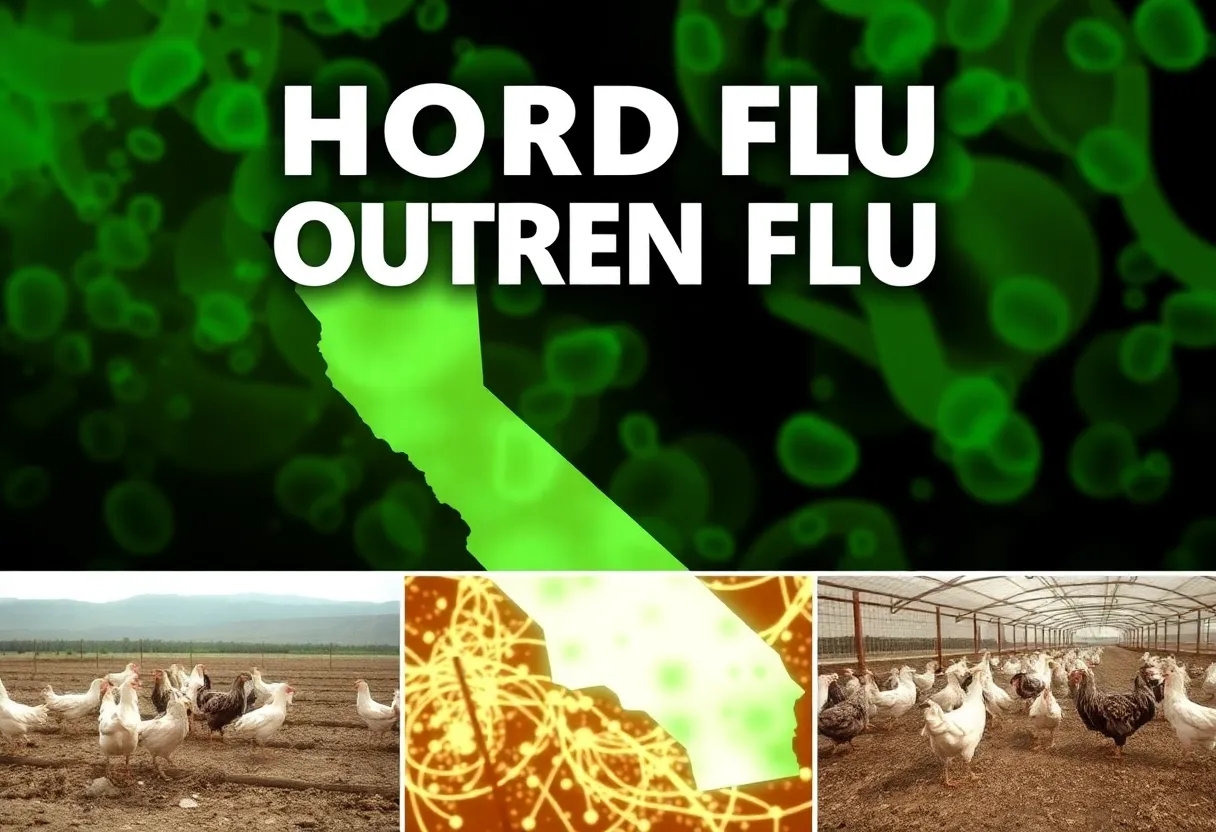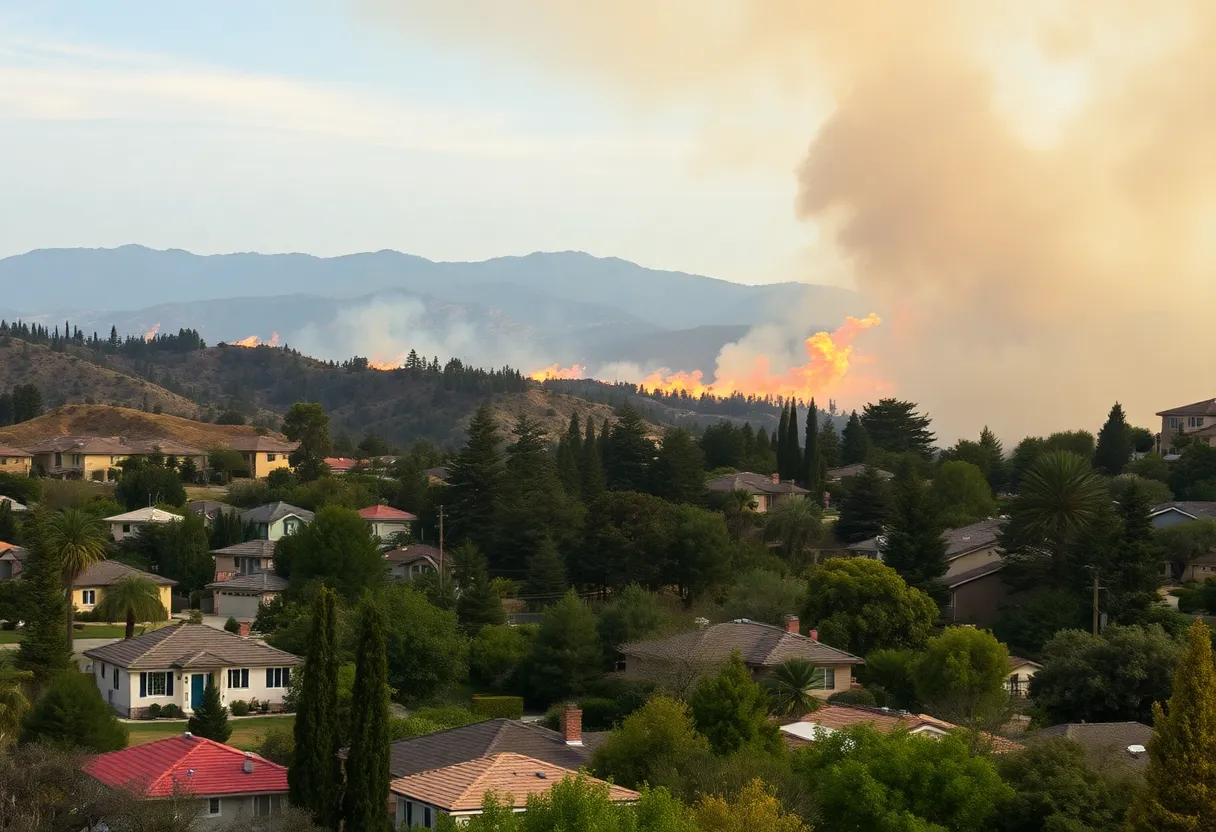News Summary
California is grappling with a severe H5N1 bird flu outbreak that has reached all 50 states, raising concerns of a potential pandemic by 2025. Over 70 human cases and one death have been reported, with significant impacts on dairy farms and egg prices. Experts warn of the virus’s evolving nature, leading to increased human infections and calling for enhanced surveillance and biosecurity measures. The situation is compounded by misinformation among the public, stressing the need for immediate action to mitigate risks associated with this emerging health crisis.
California is at the epicenter of a growing H5N1 bird flu outbreak, which has now spread across all 50 states in the U.S. Experts are raising alarms about the potential for a new pandemic, projected for 2025, as the virus continues to evolve and affect both livestock and humans. More than 70 human cases have been reported nationally, leading to one confirmed death, while nearly 1,000 dairy cow herds have been impacted across the country.
The Global Virus Network (GVN) issued a warning on April 29 regarding the urgency for action against the H5N1 virus. The virus, traditionally known for infecting birds, has shown new capabilities by spreading to cattle, particularly in California, where a state of emergency was declared in December 2024. This situation has resulted in significant economic burdens and public health concerns.
In California alone, 765 dairies have reported infections as of April 24, 2025, and 613 dairies have recovered from quarantine. The San Joaquin Valley has been especially hard-hit, accounting for nearly 85% of the state’s bird flu cases. The University of California has indicated that California consumers are facing a substantial increase of $1.3 billion in egg prices due to the culling of affected egg-laying poultry, as over 168 million birds have been culled nationwide since 2022.
Human infections have primarily been associated with contact with infected animals; however, sporadic cases without identifiable links to animal contact have been documented, raising concerns that the virus may be adapting for easier human transmission. Symptoms of H5N1 infection in humans can range from high fever to severe respiratory complications, putting livestock workers at increased risk. Nevertheless, the overall threat to the general public remains low at this time, according to health officials.
The CDC, in collaboration with state agencies, is closely monitoring the outbreak and tracking new human infections. In light of the ongoing circulation of the virus in wild birds and among backyard flocks, public health experts are calling for enhanced surveillance and improved biosecurity measures. Additionally, concerns arise regarding the recent genetic changes in the H5N1 virus, which may allow it to mix with seasonal flu viruses, potentially increasing both its transmissibility and severity levels.
To mitigate risks, the CDC is advocating for the vaccination of livestock workers against seasonal flu, as milking equipment has been identified as a possible transmission vector among cows. Reports indicate dairy workers in milking parlors are experiencing flu-like symptoms, suggesting a potential pathway for the virus to spread. As experts recommend stricter regulations and oversight of zoonotic diseases, the alarming phenomenon of misinformation in the wellness industry has emerged as a factor complicating the public’s understanding of the outbreak and potentially exacerbating the risk of a human pandemic.
In summary, the H5N1 bird flu presents a growing threat across the U.S., especially in California, where dairy farms are experiencing significant losses amid rising human infections. Immediate action is deemed vital to tackle this emerging health crisis and to prepare for the potential risks associated with increased human-to-human transmission of the virus. Ongoing efforts to enhance monitoring processes, improve biosecurity guidelines, and educate both livestock workers and the general public will be crucial in addressing the H5N1 threat and mitigating the potential for a future pandemic.
Deeper Dive: News & Info About This Topic
- North Jersey: New Virus 2025
- Wikipedia: H5N1
- Delaware Online: New Virus Pandemic Fear
- Google Search: H5N1 bird flu
- Stat News: H5N1 Bird Flu and Pet Food
- Encyclopedia Britannica: Bird Flu
- Philly Burbs: New Pandemic 2025
- Google News: H5N1 Virus

Author: Anaheim Staff Writer
The Anaheim Staff Writer represents the experienced team at HEREAnaheim.com, your go-to source for actionable local news and information in Anaheim, Orange County, and beyond. Specializing in "news you can use," we cover essential topics like product reviews for personal and business needs, local business directories, politics, real estate trends, neighborhood insights, and state news affecting the area—with deep expertise drawn from years of dedicated reporting and strong community input, including local press releases and business updates. We deliver top reporting on high-value events such as major conventions at the Anaheim Convention Center, including NAMM and VidCon, exciting games at Angel Stadium and Honda Center, and developments at Disneyland Resort Our coverage extends to key organizations like the Anaheim Chamber of Commerce and Visit Anaheim, plus leading businesses in hospitality, entertainment, and innovation that power the local economy As part of the broader HERE network, including HERECostaMesa.com, HEREHuntingtonBeach.com, HERESantaAna.com, and HERELosAngeles.com, we provide comprehensive, credible insights into Southern California's dynamic landscape.




